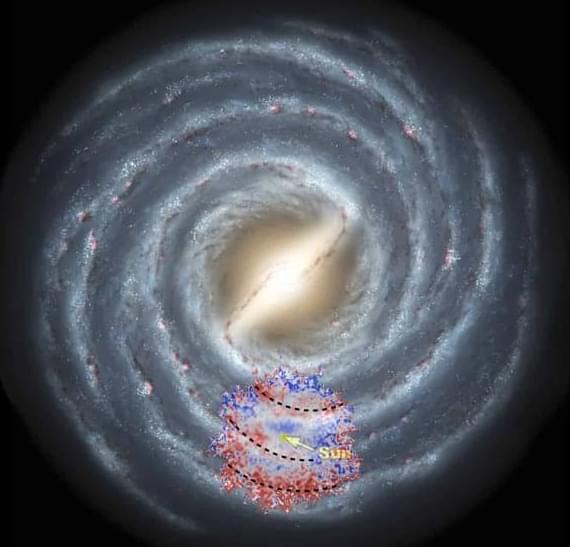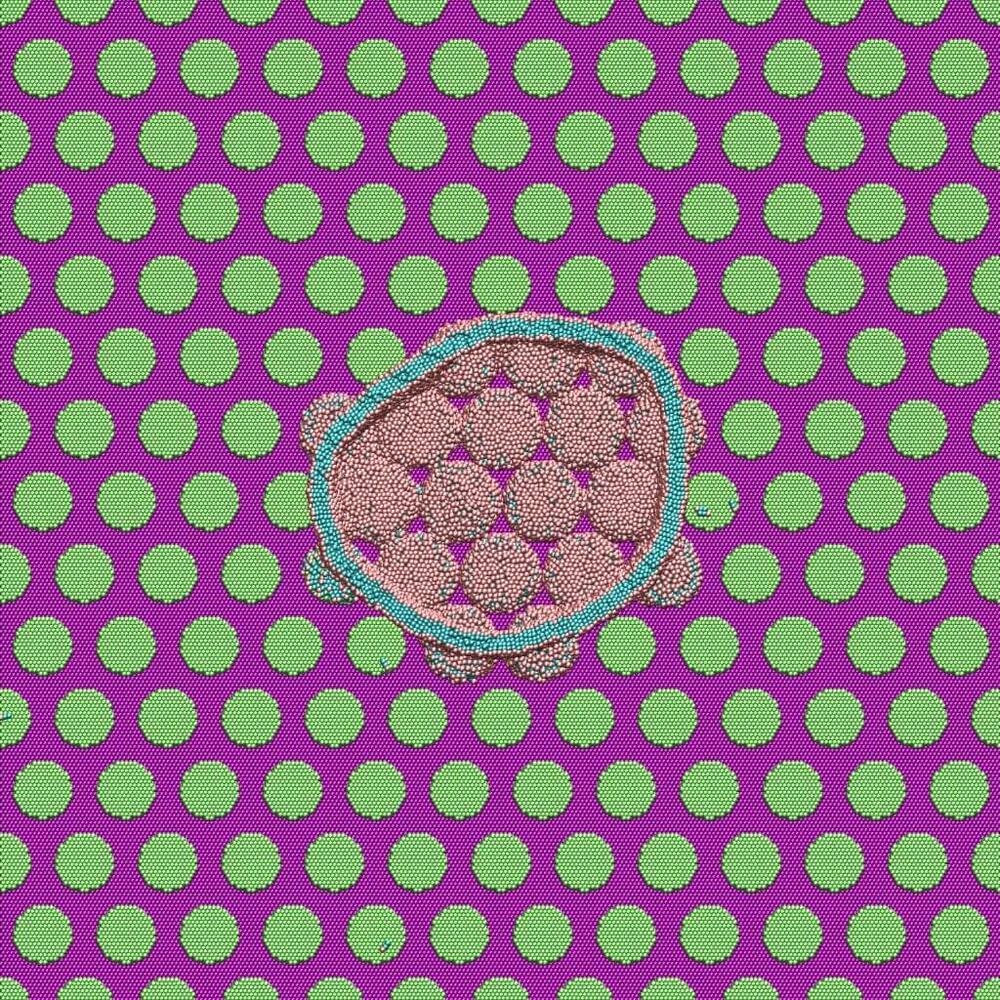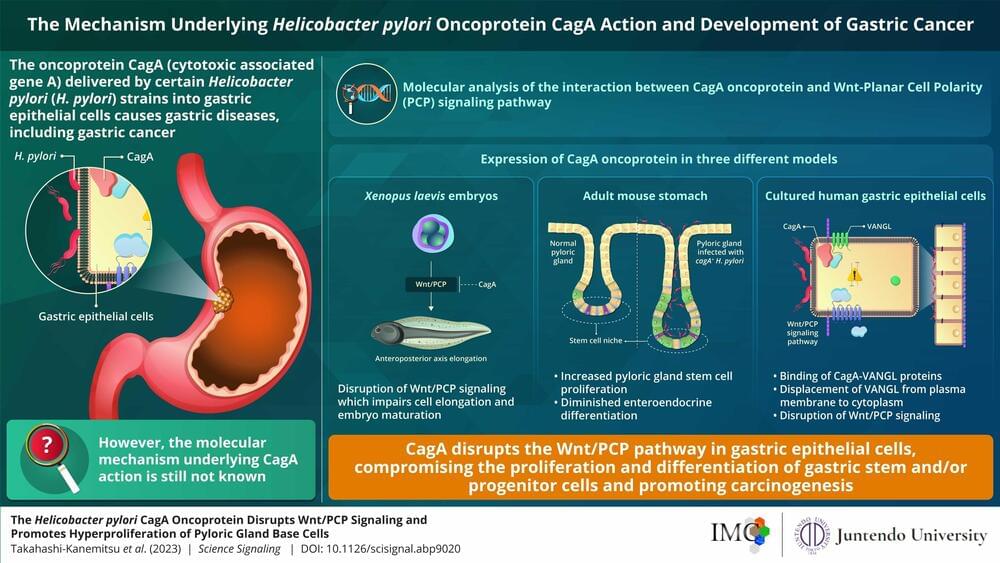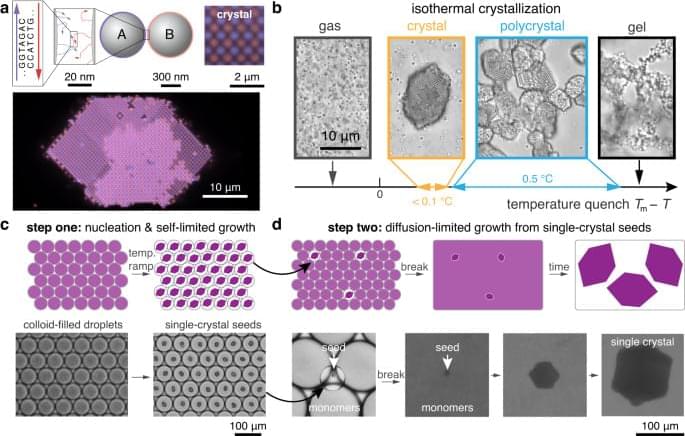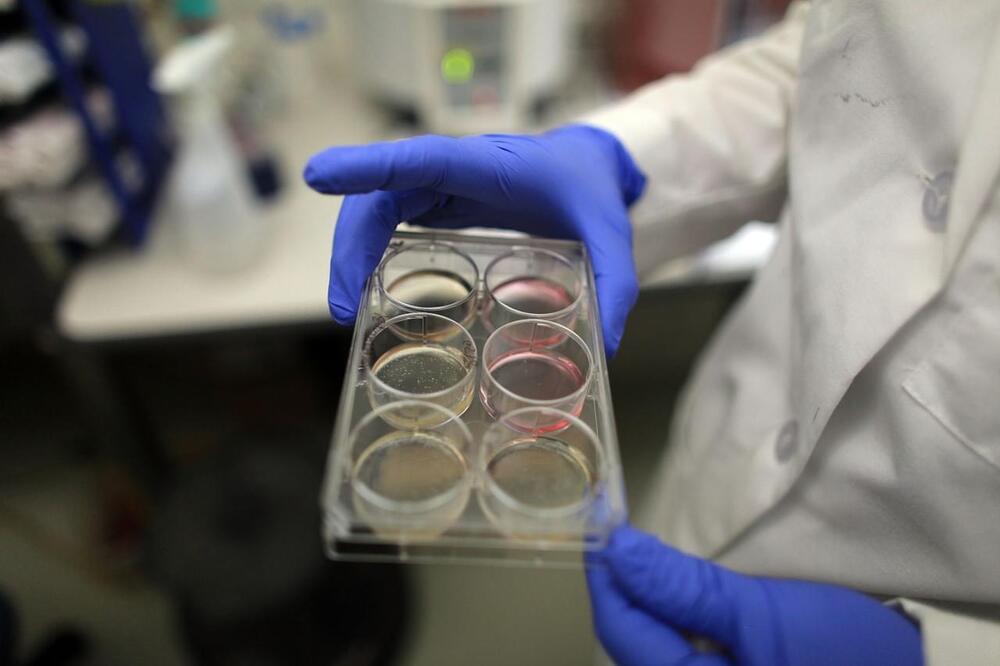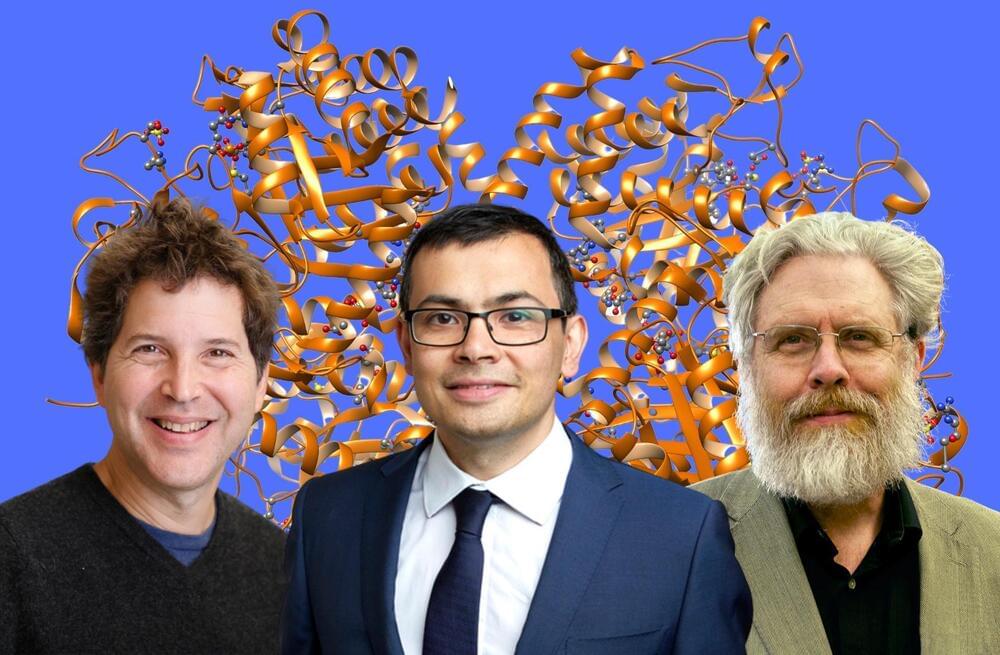Archive for the ‘chemistry’ category: Page 123
Jul 20, 2023
JWST Just Detected Carbon in The Cosmic Dawn… Before We Thought Carbon Was Possible
Posted by Josh Seeherman in categories: chemistry, cosmology
EMBARGO Wednesday 19 July 1,600 BST | 1,500 GMT | Thursday 20 July 100 AEST
Back when the Universe was still just a wee baby Universe, there wasn’t a lot going on chemically. There was hydrogen, with some helium, and a few traces of other things. Heavier elements didn’t arrive until stars had formed, lived, and died.
Imagine, therefore, the consternation of scientists when, using the James Webb Space Telescope to peer back into the distant reaches of the Universe, they discovered significant amounts of carbon dust, less than a billion years after the Big Bang.
Jul 19, 2023
US scientists discover chemical to reverse aging
Posted by Shubham Ghosh Roy in categories: biotech/medical, chemistry, life extension
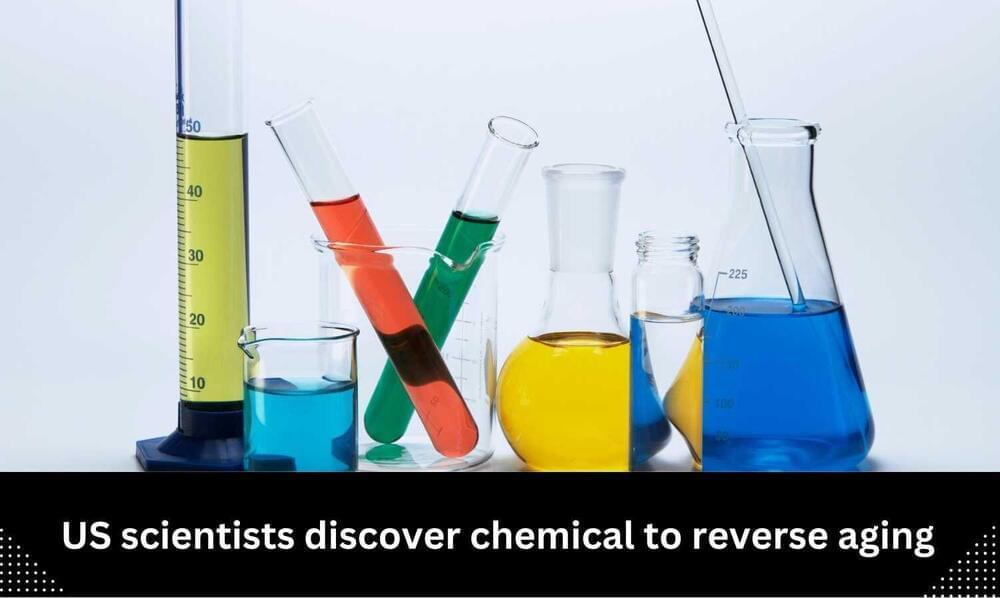
In a groundbreaking study, researchers have unlocked a new frontier in the fight against aging and age-related diseases. The study, conducted by a team of scientists at Harvard Medical School, has published the first chemical approach to reprogram cells to a younger state. Previously, this was only achievable using a powerful gene therapy.
The team’s findings build upon the discovery that the expression of specific genes, called Yamanaka factors, could convert adult cells into induced pluripotent stem cells (iPSCs). This Nobel Prize-winning discovery raised the question of whether it might be possible to reverse cellular aging without causing cells to become too young and turn cancerous.
Continue reading “US scientists discover chemical to reverse aging” »
Jul 19, 2023
Scientists use supercomputer to learn how cicada wings kill bacteria
Posted by Robin Indeededo in categories: biological, chemistry, engineering, nanotechnology, supercomputing
Over the past decade, teams of engineers, chemists and biologists have analyzed the physical and chemical properties of cicada wings, hoping to unlock the secret of their ability to kill microbes on contact. If this function of nature can be replicated by science, it may lead to development of new products with inherently antibacterial surfaces that are more effective than current chemical treatments.
When researchers at Stony Brook University’s Department of Materials Science and Chemical Engineering developed a simple technique to duplicate the cicada wing’s nanostructure, they were still missing a key piece of information: How do the nanopillars on its surface actually eliminate bacteria? Thankfully, they knew exactly who could help them find the answer: Jan-Michael Carrillo, a researcher with the Center for Nanophase Materials Sciences at the Department of Energy’s Oak Ridge National Laboratory.
For nanoscience researchers who seek computational comparisons and insights for their experiments, Carrillo provides a singular service: large-scale, high-resolution molecular dynamics (MD) simulations on the Summit supercomputer at the Oak Ridge Leadership Computing Facility at ORNL.
Jul 18, 2023
Study sheds light on mechanisms underlying H. pylori-induced gastric cancer
Posted by Shubham Ghosh Roy in categories: biotech/medical, chemistry
Helicobacter pylori (H. pylori) infections are commonly associated with abdominal pain, bloating, and acidity. Clinical evidence suggests that infection with H. pylori cagA+ strains dramatically increases the risk of developing gastric cancer.
A specialized protein delivered by H. pylori to the host, oncoprotein “CagA,” has been shown to interact with multiple host proteins and promote gastric carcinogenesis (transformation of normal cells to cancer cells). However, the underlying mechanisms associated with its biochemical activity have not been fully determined yet.
A new study published in Science Signaling on 18 July insights into the additional mechanism of oncogenic CagA action.
Jul 18, 2023
Macroscopic photonic single crystals via seeded growth of DNA-coated colloids
Posted by Dan Breeden in categories: biotech/medical, chemistry, nanotechnology
DNA-programmed self-assembly leverages the chemical specificity of DNA hybridization to stabilize user-prescribed crystal structures1,2. Pioneering studies have demonstrated that DNA hybridization can guide the self-assembly of a wide variety of nanoparticle crystal lattices, which can grow to micrometer dimensions and contain millions of particles3,4,5,6,7,8,9. Attention has now turned toward the goal of assembling photonic crystals from optical-scale particles (i.e., roughly 100‑1000 nm in diameter)10,11,12 using DNA-programmed interactions. To this end, progress over the past decade has established that DNA can indeed program the self-assembly of bespoke crystalline structures from micrometer-sized colloidal particles13,14,15,16,17,18,19. However, growing single-domain crystals comprising millions of DNA-functionalized, micrometer-sized colloidal particles remains an unresolved barrier to the development of practical technologies based on DNA-programmed assembly. Prior efforts have yielded either single-domain crystals no more than a few dozen micrometers in size13,14,15,16 or larger polycrystalline materials with heterogeneous domain sizes12,15,17,20. These features—small crystal domains, polycrystallinity, and size dispersity—have therefore precluded the use of DNA-coated colloidal crystals in photonic metamaterial applications.
Assembling macroscopic materials from DNA-functionalized, micrometer-sized colloids is challenging due to the vastly different length scales between the DNA molecules and the colloidal particles (Fig. 1a). This combination leads to crystallization kinetics that are extremely sensitive to temperature and prone to kinetic trapping1,21,22,23. The resulting challenges are both practical and fundamental in nature. For example, recent work has shown that crystal nucleation rates can vary by orders of magnitude over a temperature range of only 0.25 °C19. Extremely precise temperature control would therefore be required to self-assemble single-domain crystals from a bulk solution (Fig. 1b). At the same time, annealing polycrystalline materials is difficult due to the combination of the short-range attraction and the friction arising from the DNA-mediated colloidal interactions, which slows the rolling and sliding of colloidal particles at crystalline interfaces15,19,24,25.

Big cats also like cat nip 😗😁.
As you may know from your own pet, if there’s one thing that is guaranteed to send your cat a little dizzy it’s their catnip toy. Big cats are no exception and one of the favourite enrichment activities we give our cats is their regular catnip fix.
Jul 18, 2023
Harvard scientists claim to have discovered the “Fountain of Youth” that can be put into a pill
Posted by Genevieve Klien in categories: biotech/medical, chemistry, Elon Musk, life extension
Scientists at Harvard University claim to have come excitingly close to finding the proverbial Fountain of Youth. According to a recent publication in the scientific journal Aging, the team has identified six chemical concoctions that have the ability to reverse the aging process in both human and mice skin cells.
Dr. David Sinclair, a molecular biologist at Harvard Medical School and co-author of the study, has hailed this as a “breakthrough” and sees it as a step towards “affordable whole-body rejuvenation.”
Dr. Sinclair has even suggested that human trials could commence within the next year. This prediction has caught the attention of prominent figures, such as tech mogul Elon Musk. He responded to the news with curiosity asking, “Ok, so what exactly is it?”
Jul 18, 2023
Chemical compounds reverse cell aging, study finds
Posted by Genevieve Klien in categories: biotech/medical, chemistry, engineering, life extension
(NewsNation) — A new study claims to have found chemical compounds that can actually reverse the effects of aging, though so far results have been limited to animal studies.
Harvard Medical School, University of Maine and Massachusetts Institute of Technology scientists collaborated on the study, published in the journal Aging. Researchers found it was possible to reverse cellular engineering rather than simply delay it.
They used six chemical compounds to reverse aging in cells, returning them to a youthful state without having them revert too far and become cancerous.
Jul 18, 2023
The Next Frontier For Large Language Models Is Biology
Posted by Dan Kummer in categories: biotech/medical, chemistry, computing, genetics
Large language models like GPT-4 have taken the world by storm thanks to their astonishing command of natural language. Yet the most significant long-term opportunity for LLMs will entail an entirely different type of language: the language of biology.
One striking theme has emerged from the long march of research progress across biochemistry, molecular biology and genetics over the past century: it turns out that biology is a decipherable, programmable, in some ways even digital system.
DNA encodes the complete genetic instructions for every living organism on earth using just four variables—A (adenine), C (cytosine), G (guanine) and T (thymine). Compare this to modern computing systems, which use two variables—0 and 1—to encode all the world’s digital electronic information. One system is binary and the other is quaternary, but the two have a surprising amount of conceptual overlap; both systems can properly be thought of as digital.
